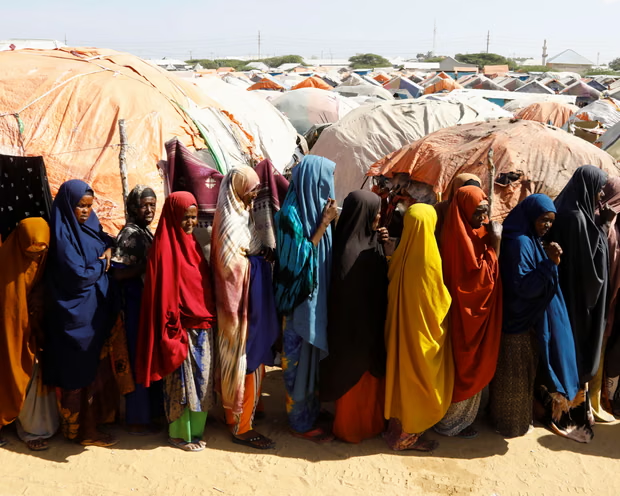One July evening, Maryan Abdikadir Geedi decided it was time to leave her small shop in the town of Moqokori, in Somalia’s Hiiraan region. For months she had resisted the urge to abandon her business, despite reports that al-Shabaab fighters were advancing. She had seen her town change hands many times before, but this time the threat felt different.
“Just like how the rain comes and goes, so does control over Moqokori,” she said. “But this time it was different. The fear was immense.”
Since February, al-Shabaab has retaken swaths of territory across Somalia, reversing gains made by government forces and allied militias that were backed last year by U.S. and Turkish air power. By July, the militant group was within 40 kilometers of Mogadishu, sparking fears that the capital might fall.
Geedi, her husband, and their nine children fled to Buloburde, 90 kilometers away, as panic spread through Moqokori. “Word started spreading that al-Shabaab was advancing. When the fear got too much to bear, I decided to leave,” she said.
In recent weeks, the front lines have stabilized, and many in Mogadishu now believe the capital is no longer in immediate danger. Construction projects continue across the city, and businesses remain open. Yet the threat lingers, with militants controlling most rural areas and dozens of smaller towns.
The United States has intensified airstrikes against al-Shabaab and other extremist groups, but Washington has made clear it will not redeploy the hundreds of special forces pulled out during Trump’s first term. Instead, Somalia relies on troops and support from Turkey, the United Arab Emirates, Uganda, and the African Union, with Egypt now sending reinforcements. Analysts warn that without this foreign assistance, government forces would likely collapse.
“It is a strategic stalemate,” said Samira Gaid, a Mogadishu-based regional security analyst. “Al-Shabaab are not interested in taking Mogadishu. They already hold most of the countryside and many towns. The government keeps its edge only because of foreign troops, and that has kept us stuck here.”
President Hassan Sheikh Mohamud has vowed “total war” against the militants since returning to office in 2022, but the latest offensive has shaken confidence in his government. The success of al-Shabaab’s campaign has drained morale among soldiers and exposed the weakness of Somalia’s fragmented security structure.
“I’ve lost 20 friends in battle and have been wounded twice,” said a 42-year-old veteran of the Somali National Army in Beledweyne. He listed towns where he had fought Beera Yabaal, Aboorey, Yasooman, Ceel Qooxle and noted that each had since been recaptured by al-Shabaab. “They believe dying brings them heaven. Our soldiers want to survive and go home with a salary.”
The veteran warned that al-Shabaab’s control of strategic towns now allows the group to move fighters and supplies across much of southern and central Somalia. “They are moving fast, and if nothing is done now, more areas will fall,” he said.
Analysts attribute the militants’ recent gains to deep divisions within Somalia’s federal system. “The situation with al-Shabaab is determined by the overall political and security environment, and that is very bad right now,” said Ahmed Soliman of Chatham House in London. “There are big divisions in the country, and these make it very difficult for government forces and their partners to coordinate. Al-Shabaab are taking advantage of the fragmentation.”
The African Union mission in Somalia costs about $160 million a year, but its funding remains uncertain. Any reduction could weaken operations and embolden militants further.
Three weeks after Moqokori fell, al-Shabaab seized Maxaas, another strategic town in Hiiraan. The capture sent shockwaves through the region as families fled en masse.
Nimo Abdi Barre, 37, was among them. She and her husband, along with their six children, escaped by hitching a ride on a lorry bound for Beledweyne. “My kids were vomiting and screaming. We were afraid of landmines on the road. My faith in God is what got me through,” she recalled.
Nimo is now living in Beledweyne with relatives but describes her life as that of a refugee in her own country. “Nothing is worse than feeling displaced on your own soil. I want to return home, but only time will tell if I ever get the chance.”
As al-Shabaab consolidates control of Somalia’s countryside and uses political divisions to its advantage, many fear the militants are not finished. The capital may be holding for now, but the sense of fragility remains, and the fear that drove families like Maryan’s and Nimo’s from their homes continues to hang over much of the country.



